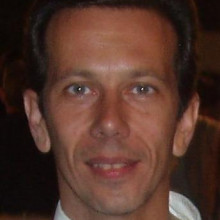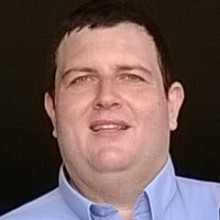Chemical Dynamics aims to understand the mechanisms that drive chemical reactions in their quantum detail. For any given reaction, this understanding includes mapping of all possible combinations of energies and orientations of reactants and products that lead to or result from reactive collisions. Achieving that, even for an elementary chemical reaction, is a monumental task, requiring a combination of theory and experiment: theory predicts what energies and orientations work and experiment confirms the prediction or points out what changes are needed.
In this talk, we will examine elements of the current state of the art in the field of experimental Chemical Dynamics, recent advances and future prospects. In photodissociation dynamics, we will focus on reaction product imaging results of highly excited small molecules. In structural dynamics, we will discuss our progress towards a time-resolved electron diffractometer, aiming to monitor structural changes during chemical reactions with high spatial and temporal resolution. Finally, in photoelectron dynamics, we will report on first results of nanosecond photoelectron circular dichroism experiments, a promising way to study chirality and separate chiral mixtures using lasers.
Position Description
The candidate will perform neuronal cell cultures on collagen-graphene scaffolds.
For the full announcement, follow the link "Related Documents"
Related Project
NeuroStimSpinal -Required Qualifications
- BSc in Biology (30%)
- Experience in neuronal cell cultures (40%)
- Fluency in English language (30%)
Application Procedure
In order to be considered, the application must include:
- Completed application Form (Download link to the left)
- Detailed curriculum vitae (CV) of the candidate
- Scanned copies of academic titles
- All required forms and documents as layed out in each Job opening description
Please send your application and all documents to: hr@iesl.forth.gr and cc the Scientific supervisor marked in the left column
Appointment Duration
6 monthsFunding


George Kopidakis received a B.Sc. in Physics from the University of Crete and a Ph.D. in Condensed Matter Physics from Iowa State University in 1995. After his graduate work at Ames Laboratory-Iowa State University, USA, he worked as a research assistant professor at the Center for Atomic-Scale Materials Physics (CAMP), Dept. of Physics, Technical University of Denmark. He then moved to Laboratoire Leon Brillouin (CEA-CNRS), Saclay, France, initially with an individual Marie Curie EC post-doctoral fellowship and later as a CNRS research associate. He was a research associate at the Physics Dept. and a visiting associate professor at the Dept. of Materials Science and Technology, University of Crete, where he was appointed assistant professor in 2003. He is also affiliated researcher at FORTH since 2005.
Interests
- Theory and modeling of materials
- Current activities include atomistic simulations with quantum and classical models for the structural, vibrational, mechanical, electronic, optical properties of amorphous and nanostructured materials, fundamentals and applications of localization and tra

Associate Professor Ioannis N. Remediakis, got his bachelor (1997), masters (1998) PhD (2002) degrees from the Department of Physics, University of Crete. His PhD research (simulations for alloyed semiconductor surfaces) was performed at Harvard University. Between 2002 and 2008, he held teaching and research appointments at the University of Ioannina, the Technical University of Denmark (DTU) and the University of Crete. In 2008, he joined Department of Materials Science and Technology, and shortly after he joined IESL as affiliated University Faculty Member.
Interests
- First-principles computer simulations for low-dimensional systems with applications to nano-chemistry (shape and properties of metal nanoparticles, heterogeneous catalysis) and nano-physics (two-dimensional semiconductors, nanostructured solids).
- Electronic structure theory.


